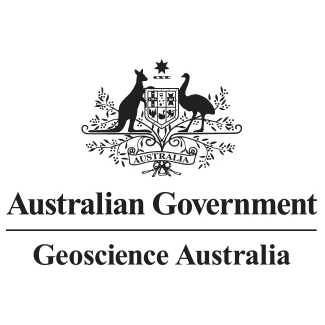Brief description
Geoscience Australia carried out a marine survey on Carnarvon shelf (WA) in 2008 (SOL4769) to map seabed bathymetry and characterise benthic environments through co-located sampling of surface sediments and infauna, observation of benthic habitats using underwater towed video and stills photography, and measurement of ocean tides and wave-generated currents. Data and samples were acquired using the Australian Institute of Marine Science (AIMS) Research Vessel Solander. Bathymetric mapping, sampling and video transects were completed in three survey areas that extended seaward from Ningaloo Reef to the shelf edge, including: Mandu Creek (80 sq km); Point Cloates (281 sq km), and; Gnaraloo (321 sq km). Additional bathymetric mapping (but no sampling or video) was completed between Mandu creek and Point Cloates, covering 277 sq km and north of Mandu Creek, covering 79 sq km. Two oceanographic moorings were deployed in the Point Cloates survey area. The survey also mapped and sampled an area to the northeast of the Muiron Islands covering 52 sq km. TheGA0308_Carnarvon_SOL4976 folder contains video footage and still images. The MS databse, the Excel files are video characterisation datasets: Carnarvon_video data (export).mdb; all_substrata_tx.xls (transect level); all_substrata_patch.xls (patch level); all_benthos_tx.xls (transect level); all_benthos_patch.xls (patch level); Carnarvon_QAQC_VIDEOlog.doc (QAQC document); Attribute_metadata.xls (attribute definition). Underwater towed-video footage abd still images represent the raw data. Video characterisation datasets include percent cover of substrata and benthic taxa characterised at two spatial scales: transect scale (mean values per transect) and patch scale (mean values for each patch type within a transect).Lineage
Maintenance and Update Frequency: asNeeded
Statement: The distribution of seabed habitats and associated assemblages were visually characterised from underwater tow-video footage from the immediate nearshore to just beyond the shelf break in three survey areas (Mandu, Pt Cloates, and Gnaraloo). At each station within the three survey areas, a single towed-video transect was undertaken using the AIMSs towed-video system, deployed from the stern of the RV Solander and towed for a distance of approximately 500 m. An operator used a remote-controlled winch to maintaining an altitude of 0.5 to 2 m above the seabed. The towed-camera system housed a forward-facing video camera and down-facing stills camera and their associated lights. Using the forward-facing video camera, video was transmitted to the surface via coaxial cable where video footage was recorded to mini DV tapes, and copied to digital format. The vertically mounted stills camera took digital photographs of the benthos every two seconds. The original mini DV tapes and still images are archived at AIMS-WA while digital copies are housed at GA and AIMS. The ships GPS position (i.e. UTC date and time, depth, latitude and longitude) was encoded to the audio track (called timecode) of the video footage for each video transect (although 8 transects failed to have GPS positions encoded) using Geocoder and following AIMS protocols. Underwater video footage and still images were collected from 122 stations from water depths of 13-125 m, although video quality varies among transects and some still images were not of suitable quality for analysis. 112 transects (those with gps timecode) were post-processed to provide characterisations of seabed habitats and benthic assemblages. Percent cover estimates were recorded for a single frame every 15 seconds along the transect. Due to the oblique angle of the video footage the observer recorded the percent coverage across the bottom 2/3 of the frame for each substratum type, and benthic taxa. Due to the positional uncertainty of the video data (approx. 30 m), these data were then used to calulate mean values of percent cover for each transect (transect scale, approx. 500m) and for patches within transects (patch-scale, generally 30 m or greater).
Issued: 2011
text: westlimit=113.1894; southlimit=-23.9058; eastlimit=113.9039; northlimit=-22.0552
Subjects
AU-WA |
Bathymetry Grid |
CERF |
Earth Sciences |
Geology |
Marine Data |
Marine Geoscience |
Published_External |
geoscientificInformation |
habitat |
marine |
marine survey |
User Contributed Tags
Login to tag this record with meaningful keywords to make it easier to discover
Other Information
Download the file (mdb) (File download)
Identifiers
- URI : pid.geoscience.gov.au/dataset/ga/72044

- global : a529430e-2186-0f20-e044-00144fdd4fa6


